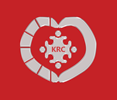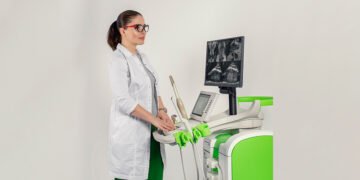Robot-assisted surgery, since its inception in the 1970s, has become one of the most significant achievements of modern medicine and is considered a new “gold standard” for surgical treatment of various diseases in developed countries. With the help of robotic systems, surgeries are now widely performed in general surgery, urology, gynecology, and cardiovascular surgery.
For the first time in Georgia and the South Caucasus, on February 27, 2024, Professor Guram Karazanashvili performed a robot-assisted prostatectomy for prostate cancer. Later, on July 17, 2024, at the same clinic (Guram Karazanashvili Robotic Center), Associate Professor Zurab Manijashvili of the Department of Surgery #2 at Tbilisi State Medical University performed Georgia’s first robot-assisted resection of the sigmoid colon and the formation of a descendorecto anastomosis with a circular stapler, due to sigmoid colon cancer. Robot-assisted surgeries in gynecology are also planned in the near future.
Currently, there are three main surgical approaches to abdominal surgery worldwide:
-
Traditional open surgery
-
Endoscopic or laparoscopic surgery (already well-established and popular)
-
Robot-assisted surgery – now introduced at Guram Karazanashvili’s Robotic Center – which is internationally recognized as the gold standard due to its minimally invasive nature.
Just four months after its implementation, over 50 successful robot-assisted procedures have already been performed.
Advantages of Robot-Assisted Surgery Compared to Open and Laparoscopic Methods:
-
Preoperative setup (known as docking) ensures precise equipment configuration.
-
Minimally invasive: These surgeries place minimal strain on the body.
-
Enhanced visualization: The intraoperative 3D image on the monitor surpasses even the most advanced 3D laparoscopic systems, emphasizing visualization over palpation in modern surgery.
-
10x magnification provides highly detailed and accurate imagery.
-
Highly precise instrument movement: The robotic arms mimic the surgeon’s hand movements with greater finesse, surpassing human capabilities in stability and precision.
-
No physiological tremors: Unlike human hands in open or laparoscopic surgery, robotic instruments are tremor-free.
-
Reduced trauma: Precision reduces tissue damage, intraoperative bleeding, and shortens operation time.
-
Superior articulation: Robotic instruments offer seven degrees of freedom and 90° flexion, enabling complex procedures with ease and precision.
-
Surgeon comfort: Operations are performed while seated with ergonomically placed hands and head, reducing surgeon fatigue.
-
Lower infection risk: The operating team doesn’t directly touch the surgical field.
-
Faster recovery: Patients experience shorter hospital stays, faster postoperative rehabilitation, and quicker return to daily activities.
While robot-assisted surgery may initially be more expensive due to advanced technology, the overall cost is often reduced thanks to shorter hospitalization, faster recovery, and fewer complications.
Applications of Robot-Assisted Surgery:
-
Urology & Oncology: Radical prostatectomy with extended lymphadenectomy, radical or partial nephrectomy, adrenalectomy, ureter segment reconstruction.
-
General Surgery & Oncology: Hepatobiliary, pancreatic, gastric, splenic, small and large bowel, and rectal surgeries; bariatric procedures; and plastic/reconstructive hernia surgeries.
Globally, robot-assisted surgery holds a leading position. Between 2007 and 2024, over 11 million robot-assisted surgeries were performed worldwide. In the U.S., 90% of prostatectomies are now done using this method.
Importantly, the robot does not perform the operation autonomously — the surgeon maintains full control. The robotic system enhances precision and delivers results unattainable by the human hand or eye alone. Thus, combining a highly qualified surgeon with state-of-the-art robotic technology ensures the best possible outcomes for patients.
That said, surgeons must also master open and laparoscopic techniques. Human factors may sometimes necessitate conversion from robotic to another surgical approach. For this reason, the surgeons at Professor Guram Karazanashvili’s clinic are proficient in all modern surgical methods.






